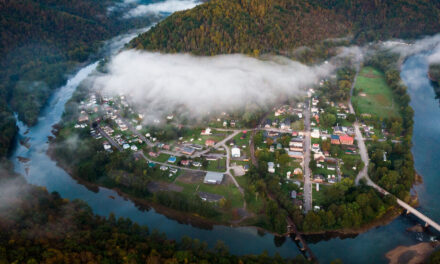
Tropical Storm Nicholas to Bring Up to 16 Inches of Rain to Texas

The storm could produce up to 16 inches of rain in parts of coastal Texas through the middle of the week, the National Hurricane Center said.

Tropical Storm Nicholas, which formed on Sunday in the Gulf of Mexico, could bring heavy rains to coastal Texas and Louisiana on Monday and Tuesday as it strengthens, the National Hurricane Center said.
A tropical storm warning is in effect for the coast of Texas, from the mouth of the Rio Grande to High Island, Texas, about 80 miles east of Houston, the center said. Mexico has also issued a tropical storm warning from Barra El Mezquital north to the U.S.-Mexico border.
A hurricane watch is also in effect for the coast of Texas, from Freeport to Port Aransas, just east of Corpus Christi, the center said.
Nicholas, the 14th named storm of the 2021 Atlantic hurricane season, could produce rainfall totals of eight to 16 inches, with isolated amounts of up to 20 inches, across portions of coastal Texas lasting through the middle of the week, the hurricane center said.
In southwest Louisiana and parts of eastern Texas, the storm could produce rainfall totals of 5 to 10 inches, which could cause “considerable flash and urban flooding,” the hurricane center said.
Forecasters said tropical storm conditions were expected along parts of the northeastern coast of Mexico and South Texas beginning Monday morning. It was expected to approach the middle Texas coast as a tropical storm on Monday, but could be near hurricane intensity if it remains over water longer, the hurricane center said.
Nicholas is expected to strengthen until it reaches the northwestern part of the Gulf Coast on Monday night or early Tuesday morning, the center said. At42 a.m. Central on Monday, the storm was moving northward at 14 miles per hour.
How to Decode Hurricane Season Terms
How to Decode Hurricane Season Terms


Karen Zraick and Christina CaronReporting on the weather 🌬️

What is “landfall”? And what are you truly facing when you’re in the eye of the storm?
During hurricane season, news coverage and forecasts can include a host of confusing terms. Let’s take a look at what they mean →
It has been a dizzying couple of months for meteorologists as the arrival of peak hurricane season — August through November — led to a run of named storms that formed in quick succession, bringing stormy weather, flooding and damaging winds to parts of the United States and the Caribbean.
Tropical Storm Mindy hit the Florida Panhandle on Sept. 8, just hours after it formed in the Gulf of Mexico. Hurricane Larry, which formed on Sept. 1, strengthened to a Category 3 storm two days later and then weakened. It struck Canada as a Category 1 hurricane and caused widespread power outages in Newfoundland.
Ida battered Louisiana as a Category 4 hurricane on Aug. 29 before its remnants brought deadly flooding to the New York area. Two other tropical storms, Julian and Kate, both fizzled out within a day at the same time.
Not long before them, in mid-August, Tropical Storm Fred made landfall in the Florida Panhandle and Hurricane Grace hit Haiti and Mexico. Tropical Storm Henri knocked out power and brought record rainfall to the Northeastern United States on Aug. 22.
The links between hurricanes and climate change are becoming more apparent. A warming planet can expect to see stronger hurricanes over time, and a higher incidence of the most powerful storms. But the overall number of storms could drop, because factors like stronger wind shear could keep weaker storms from forming.
Hurricanes are also becoming wetter because of more water vapor in the warmer atmosphere; scientists have suggested storms like Hurricane Harvey in 2017 produced far more rain than it would have without the human effects on climate. Also, rising sea levels are contributing to higher storm surge — the most destructive element of tropical cyclones.
A major United Nations climate report released in August warned that nations had delayed curbing their fossil-fuel emissions for so long that they could no longer stop global warming from intensifying over the next 30 years, leading to more frequent life-threatening heat waves and severe droughts. Tropical cyclones have likely become more intense over the past 40 years, the report said, a shift that cannot be explained by natural variability alone.
Ana became the first named storm of the season on May 23, making this the seventh year in a row that a named storm developed in the Atlantic Ocean before the official start of the season on June 1.
In May, scientists with the National Oceanic and Atmospheric Administration forecast that there would be 13 to 20 named storms this year, six to 10 of which would be hurricanes, and three to five major hurricanes of Category 3 or higher in the Atlantic. In early August, in a midseason update to the forecast, they continued to warn that this year’s hurricane season would be an above-average one, suggesting a busy end to the season.
Matthew Rosencrans, of NOAA, said that an updated forecast suggested that there would be 15 to 21 named storms, including seven to 10 hurricanes, by the end of the season on Nov. 30. Nicholas is the 14th named storm of 2021.
Last year, there were 30 named storms, including six major hurricanes, forcing meteorologists to exhaust the alphabet for the second time and move to using Greek letters.
It was the highest number of storms on record, surpassing the 28 from 2005, and included the second-highest number of hurricanes on record.
Christopher Mele and Daniel Victor contributed reporting.
Source: https://www.nytimes.com/article/tropical-storm-nicholas-hurricane.html




















